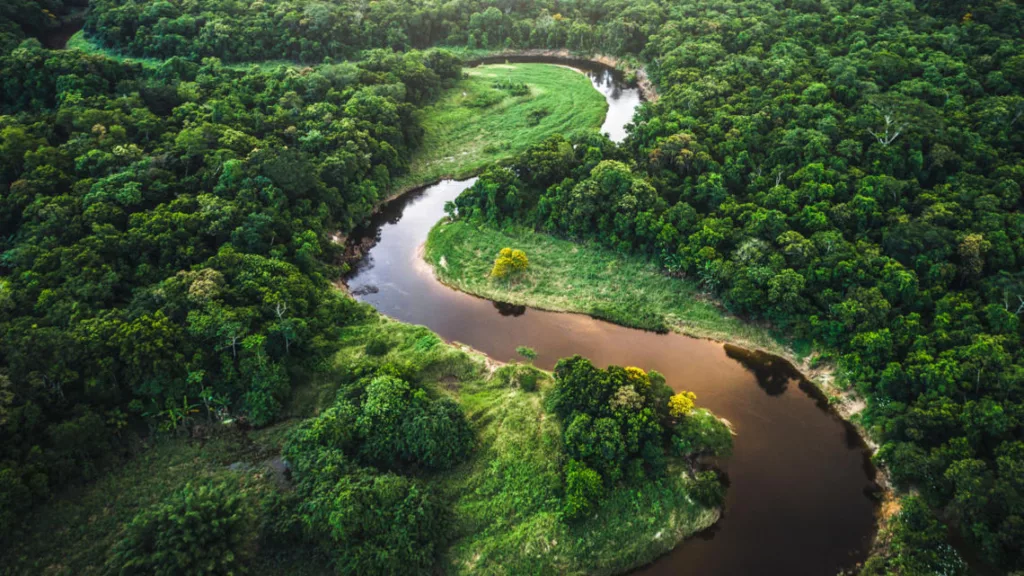Authors
Vania Farid, Yale School of the Environment, Joss Tantram, Director, Redefining Value, WBCSD, Yi Sun, Associate, Redefining Value, WBCSD
Introduction
WBCSD’s Vision 2050 – Time to Transform and WBCSD’s 2022-2027 Strategy highlights that the journey to sustainability requires a reinvented response to environmental and social megatrends and challenges to drive the development of resilient and regenerative companies and economies.
Among a number of needed corporate and wider sectoral transitions, the transition to zero-carbon is perhaps the most advanced of these shifts and its implications on energy and transport sectors (and knock-on effects for all sectors) are becoming widely accepted. In addition, companies also face other significant transitions, most notably related to their:
- Impact on nature and biodiversity
- Resource utilization and the adoption of circular economy principles
- Need to demonstrate their contribution to greater social equity and cohesion
Not only do companies need to focus and communicate around these areas, but investors also need to respond to ensure that these transitions are supported and rewarded by capital markets.
What does transition look like in practice? How can companies develop transition strategies and plans that meet requirements for both driving sustainability performance and gaining credibility and reward from capital market actors and other stakeholders? This opinion piece presents a brief insight to these questions based upon a small number of interviews with WBCSD members and investment professionals. It is intended to be a contribution to a wider subsequent set of insights and activities on the topic of sustainable transition in practice.
What is sustainable transition?
“Sustainable transition” is defined by Grin et al as a “radical transformation toward a sustainable society, as a response to a number of persistent problems confronting contemporary modern societies.” It is a necessary step to create a sustainable future and requires businesses to reimagine their strategies to work within planetary boundaries. Delivering this transition presents the opportunity for companies to build long-term resilience whilst exploring, developing, and deploying innovation to take advantage of new opportunities.
WBCSD’s Future-Proof Business established a blueprint for the evolution of corporate practice required to deliver true value across social, environmental and economic dimensions.
However, in practice, shifting towards sustainable corporate practice is complex, nuanced and sometimes messy. It may require significant change and disruption to current business models, which in turn can impact on a business’ ability to provide consistent financial performance.
A number of leading corporations have successfully integrated sustainability into their business purpose, strategy and operations, and as a result have become leaders in their respective sectors. In parallel, forward-looking financial institutions have become increasingly interested in applying environmental, social and governance (ESG) considerations to their capital allocation, equity holdings and their communication and engagement with companies.
As an indicator of this shift, 2020 saw capital inflow towards sustainable funds in the United States reaching $5.1 billion, more than twice the amount in 2019. As investors seek to recognize, rate and reward more sustainable companies, greater opportunities are open for business to respond strategically to sustainability issues to allow them to meet investor needs.
Developing a common agenda for sustainable transition
As we need systemic transformations to successfully disrupt business-as-usual and shift towards the generation of long-term value and future success, business and finance must work together to achieve sustainable transformation in their sectors.
They also need to understand each other’s expectations through:
- Mutual recognition of the common characteristics of Future-Proof companies
- Better understanding of signals that are meaningful and reliable to predict successful transitions
- Identification of best practices that companies employ to articulate their intentions and plans for sustainable transition
Exploring and valuing sustainable transition in practice
Based on our research and interviews with sustainability pioneers in their respective industries, we see that companies undertake transitions in different ways. Some of them integrate sustainability internally (inside-out approaches), driven by existing or potential physical risks, reputational damage, or by a drive for competitive differentiation. Others may adopt sustainability to respond to external pressures from regulatory requirements, customer and stakeholder pressure and the needs of financiers and investors (outside-in approaches).
For the finance sector, rising interest in sustainable investment has driven investors to look for future-oriented companies, with long-term value creation potential. Investors are increasingly concerned about the risks that short-termism brings to their portfolio.
The first impacts of short termism may manifest within investment portfolios, as companies that are over-leveraged or lack resilience suffer in times of social and market disruption. However, the real cost of short-termism is a failure to invest in research and development as well as reductions in capital expenditure and wider investment within the business to cut back on their long-term investment. A CFA Institute study shows that the forgone earnings of short-termism cost about $79.1 billion annually. Short-termism can also distract from companies’ focus on climate risk, which can pose real physical damage to business operations and prospects. Hence, as investors look into long-term investment, the incorporation of ESG is inevitable.
The emerging characteristics of sustainable transition
There is further to travel in order to develop a clear picture of the characteristics that constitute and predict successful sustainable transition. However, from our research so far, we have identified some fundamental elements, summarized below.
1. Purpose-driven
A successful transition requires companies to be purpose-driven by embedding sustainability purpose as their core value. We characterize purpose-driven companies as those which understand their impacts, dependencies and contribution to the larger society and use their resources, skills, expertise, and financial capability to create sustainable solutions that provide a positive impact on the world. Being purpose-driven should seek to ensure that every business decision serves that long-term purpose while providing return to the company and society.
2. Financial strength
Financial strength is a strong indicator of a company’s likely ability to achieve a successful transition, as it helps the business and investors to justify the financial implications of transition and builds conviction for long-term value creation. A healthy balance sheet provides the capacity to consider and undertake strategic change.
We found direct indicators showing increased revenue, sales, or Earnings Before Interest, Taxes, Depreciation, and Amortization (EBITDA) related to both innovation and sustainability through the development of new value-added products, reduced operating costs from higher efficiency and improved resource management, and more effective risk and opportunity management.
A number of other studies have found a generally positive correlation between sustainability and financial outperformance – companies that take a strategic approach to recognizing and managing sustainability are also those that are most likely to be well-run, having mature and integrated governance and management approaches, with more capabilities of spotting and responding to emerging risks and concerns. For example, an NYU Stern study found a positive relationship between ESG and financial performance for 58% of corporations studied. They also found that studies with longer time horizons demonstrated yet stronger results, with 76% of corporations more likely to experience positive or neutral financial outcomes.
3. Transparency and accountability
More and more countries are requiring companies operating within their territories to report their ESG performance and sustainability metrics. Some form of sustainability disclosures will be mandatory for both domestic and international corporations soon in the US and EU.
As the bar for corporate sustainability performance becomes higher, external assurance is an ever more vital component of reliable and effective sustainability communication. It increases the ability of investors and other stakeholders to trust and rely on sustainability data, while at the same time reducing the risks of producing misleading information.
4. Demonstrating leadership
Scientific information on climate change and global social issues are increasingly shaping consumer demands, and perhaps more significantly, the focus and strength of regulation and compliance requirements. Companies that proactively identify and manage their material environmental and social issues will be rewarded with enhanced business resilience, stronger business models, reduced operational and physical risks, and a greater level of preparedness for emerging regulation and enforcement.
Communicating and engaging on sustainable transition
Today, companies are increasingly active in the mode and method by which they communicate to investors their current sustainability performance and how sustainability is shaping their strategic intentions. This has shifted how companies communicate with investors, as both sides are learning to integrate sustainability in existing communication channels such as earnings calls, annual general meetings and their wider investor relations activities. Some companies hold dedicated sustainability investor days to communicate their approaches, performance and intentions to investors. In turn, as investors seek deeper levels of engagement with companies, we can see that ESG aspects are featured more consistently in communications between them.
Sustainable transition – not just a numbers game
However, there is a mismatch between what and how companies communicate on their sustainability transition, and the information that investors require.
For many investors, their assessment of a company’s transition intentions combine a mix of quantitative assessment of performance and projections, with the qualitative assessment of the company’s judgement calls, strategic choices, governance and the competency of the leadership team in delivering successful strategic change.
For companies, sustainability transition is a complex, nuanced and sometimes messy process. We find that companies are likely to be better at engaging with investors on sustainable transition if they can:
- Demonstrate how their sustainability transition will improve investors’ portfolio performance, communicating how sustainability directly influences their financial indicators and how their transition intentions will affect those indicators over time
- Identify the contribution of sustainability to the way that they recognize, account for and communicate business value
- Identify and disclose the positive correlations between company value (e.g., capital cost & performance, equity risk, intangible value) and their sustainability strategy and performance
- Explain their strategic choices for transition and demonstrate governance capacity and competence to deliver against those intentions
Sustainability transition is a journey, rather than a destination. As the pressures of the climate, nature and inequality crises continue to manifest and grow, both companies and investors will significantly evolve their understanding and practice of what constitutes successful transition, how it is framed and communicated by companies, and valued and rewarded by investors.
WBCSD news articles and insights may be republished in accordance with the Creative Commons Attribution-NonCommercial-NoDerivatives 4.0 International Public License, and in accordance with our Privacy Policy. All Content must be featured with due credits.
Outline
Related
Content

The future of food – How Kraft Heinz is working toward and contributing to a more sustainable food system
17 October, 2023

TNFD releases proposed disclosure metrics for the forest sector
19 September, 2023

U.S. Department of State’s Forest Investor Club Releases Inaugural Annual Report, Encouraging Billions in Nature-Based Investments
13 September, 2023

